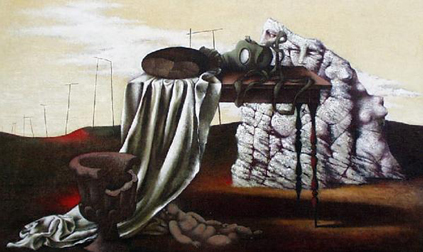Andrew Graham-Dixon on forgotten Czech modernists revived at MoMA, Oxford, and the ICA
A group of artists, architects, writers, designers and various other creative types got together one day in the Cafe Union in Prague in 1920, had a few drinks, made speeches and thought of a name for themselves: ''Devetsil''. No one knows why. In Czech, apparently, ''devetsil'' denotes a plant - the spiky butterbur, or Petasites Vulgaris, to be precise - but divide it into two and you arrive at ''devet sil'', which means ''nine forces''. There were more than nine people at the Cafe Union, however, so the name remains a mystery.
The enigma is, in its way, revealing. ''Devetsil'', the latest in the series of enterprising eastern bloc exhibitions that has been the most striking feature of David Elliott's directorship of Oxford's Museum of Modern Art, is dedicated to a movement that has been wiped from the memory banks of the nation that produced it. Few Czechs are aware of its existence, since the attitude of their national museums, at least since 1948, the date of Communist take-over, has been that it was not worth preserving. There have been no histories of Devetsil, whose activities remain shrouded in obscurity.
It was not always so. ''Vive le Devetsil!'' Filippo Tommaso Marinetti, that tireless proselytiser of Futurist ideology, is said to have proclaimed when he lectured at the Svandavo Theatre in Prague in 1921. It didn't, as things turned out, but Marinetti's visit is a reminder that Czechoslovakia, long considered marginal to the development of European modern art, was once seen as a potential headquarters of the avant- garde. Situated in the heart of central Europe, Czechoslovakia was a promising environment for artists in the great age of the ''ism''. Constructivism, Futurism, Dadaism, Cubism - all exerted their...


